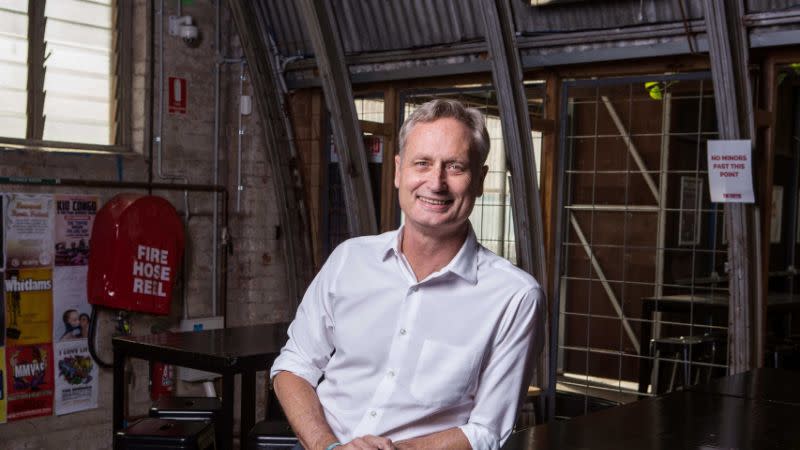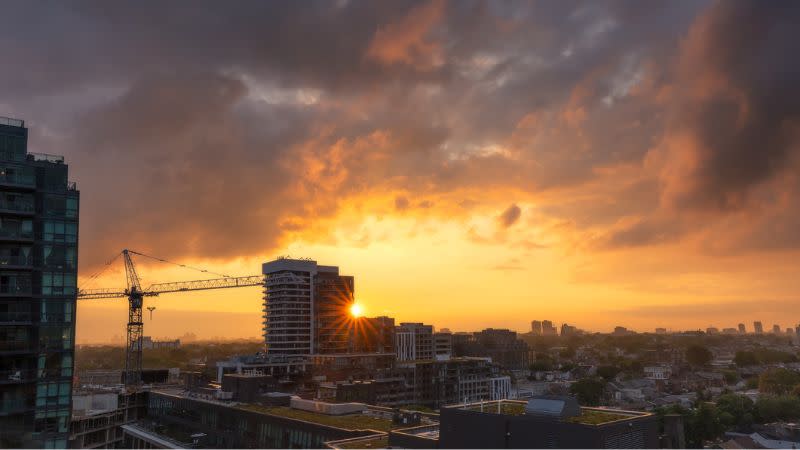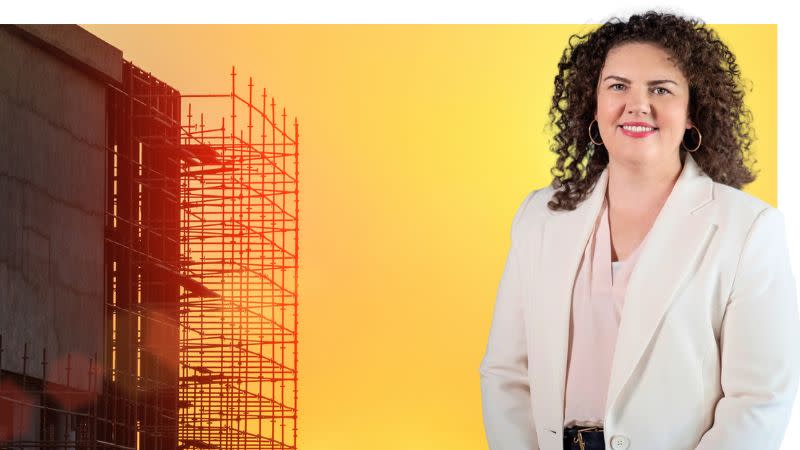
Scott Hutchinson has just returned to Australia from Burning Man—the annual event that brings tens of thousands of people to Nevada’s Black Rock Desert for a week of “community, art, self-expression, and self-reliance”.
Hutchinson first flew to the week-long desert festival in 2010. He hasn’t missed one since.
“Yeah, mate, it’s just my thing. I love it,” he says. “This year was too good to be true … don’t believe all that other stuff.”
The “other stuff” to which he refers is the two to three months of rain—about 21mm—that fell in 24 hours on the temporary desert city in what is normally the driest of the United States.
While thousands reportedly got stuck in mud as they tried to leave, like Hutchinson, most saw it as part of the experience. And in any case, as chairman of Queensland’s biggest building company, privately owned Hutchinson Builders, he is used to watching weather forecasts.
And was pleased to learn upon his return that Australia, and particularly the eastern seaboard, is officially in for a long, hot summer.
The Bureau of Meteorology (BoM) had finally declared an El Nino event—one of two climate patterns that generally determine whether Australia will have a hot or a wet summer and whether there’s more risk of bushfires, floods and droughts.
El Nino, according to the BoM, is part of a natural cycle known as the El Nino–Southern Oscillation (ENSO) and is associated with many months of sustained warming.
Other than a shift in temperature extremes, El Nino brings less rain, an increased risk of frost, fewer tropical cyclones, decreased alpine snow depths and a heightened fire danger in south-east Australia.
Gloomy as that prediction is, Hutchinson welcomes it—in February this year he called for just that.
“We need a recession and a drought and things will get back to normal … and I reckon we might get both,” he told The Urban Developer’s Phil Bartsch.

At that time he and other builders had just come out of the other ENSO weather event—La Nina—which brings cooler temperatures, more tropical cyclones and increased rainfall.
“The rain in La Nina was actually worse than Covid,” says Hutchinson. “It was just crippling, we could never get a swing along. It was just horrible.”
In fact, quantity surveyor Matt Hemming, of Mitchell Brandtman, says he recalls one project where they lost 100 days due to La Nina’s wet weather.
“That’s something that really impacted the market through the Covid delay times,” he says.
“When we were going through all those issues and material price rises, to then get the weather delays … when a builder gets only time and no cost for that, so that’s a huge impact.
“If they’re forecasting less rain in the foreseeable future, well, that can’t be a bad thing from a build point of view, but it obviously creates a lot of problems elsewhere.”
One of those problems will be rising temperatures.
Under Enterprise Bargaining Agreements (EBAs) struck by the Construction, Forestry, Maritime, Mining and Energy Union (CFMEU) its 100,000-plus members will stop work and leave a site when the temperature reaches 35C.
In Queensland and the Northern Territory, construction workers can also leave a site if the temperature reaches 29C alongside humidity of 75 per cent.
The CFMEU says the temperature should be measured at the BoM weather station nearest the work site.
Barry Laycock, a director with cost management and quantity surveyors Slattery, says El Nino should improve productivity, as long as “we don’t go over the CFMEU’s threshold for being heated off”.

“In theory you won’t get as many lost days from wet weather,” Laycock says.
“So as long as it stays below that threshold, but we get dry weather, then it should assist builders’ programs.”
Hutchinson agrees.
While as chairman he no longer runs the company, the challenges of the past 30 months have meant he continues to work five days a week. And back from Burning Man, he’s been touring the company’s building sites.
He reminded his staff El Nino was back and dry weather was in their future. They reminded him he’d now have to watch the temperature.
“The problem is, of course, it’s hard to get them back to work once you’ve stopped them and we’ve got so much work at the moment, it’s crazy.
“All our subcontractors have gone broke, so we’ve gone down into the trades doing them.”
Insolvencies in the sector, for whatever reason, are creating their own problems.
CoreLogic construction cost estimation manager John Bennett has watched the cost of homeowners’ warranty insurance policies—the type that protect consumers against a builder failing to complete a job—rise by up 40 per cent in the past 12 months.
“It’s my opinion, what’s happened is because we’ve seen a lot of builders go under in the past six months, 12 months, etc, those flow-on costs will be hitting the insurance companies about now and they’re setting themselves up for the next 12 months,” he says.
This July was the world’s hottest month on record with wildfires raging throughout southern Europe and temperatures soaring globally, prompting UN secretary general Antonio Guterres to declare: “The era of global warming has ended and the era of global boiling has arrived.”

The Urban Land Institute (ULI)—a global organisation of 44,000 real estate and urban development professionals—says the modern built environment is a clear contributor to extreme heat.
But in a report titled Scorched: Extreme Heat and Real Estate in Asia Pacific, ULI argues the sector can also be part of the solution, particularly in cities where there are opportunities to adopt mitigation strategies that directly reduce temperatures.
Resilient Building Council chief executive Kate Cotter agrees, saying there is the potential to help improve the resilience of our communities—and save lives and properties.
“Australia is exposed to increasing extreme weather and disasters, yet less than 10 per cent of our houses are resilient to local risk,” Cotter tells The Urban Developer.
“The reality is we need to build better, and we can.”
For now, Australia’s construction industry is looking forward to drier conditions, with Hutchinson warning it will mean construction times are likely to tighten.
“At the moment because we’re all used to wet weather, and also post Covid and the boom, construction times have all blown out. But clients and everybody else understands that.
“As soon as it’s dry, and after about 12 months of everybody expecting it to be dry, you’ll find clients will demand tighter build times.
“But that’s human nature and has nothing to do with El Nino.”
You are currently experiencing The Urban Developer Plus (TUD+), our premium membership for property professionals. Click here to learn more.
